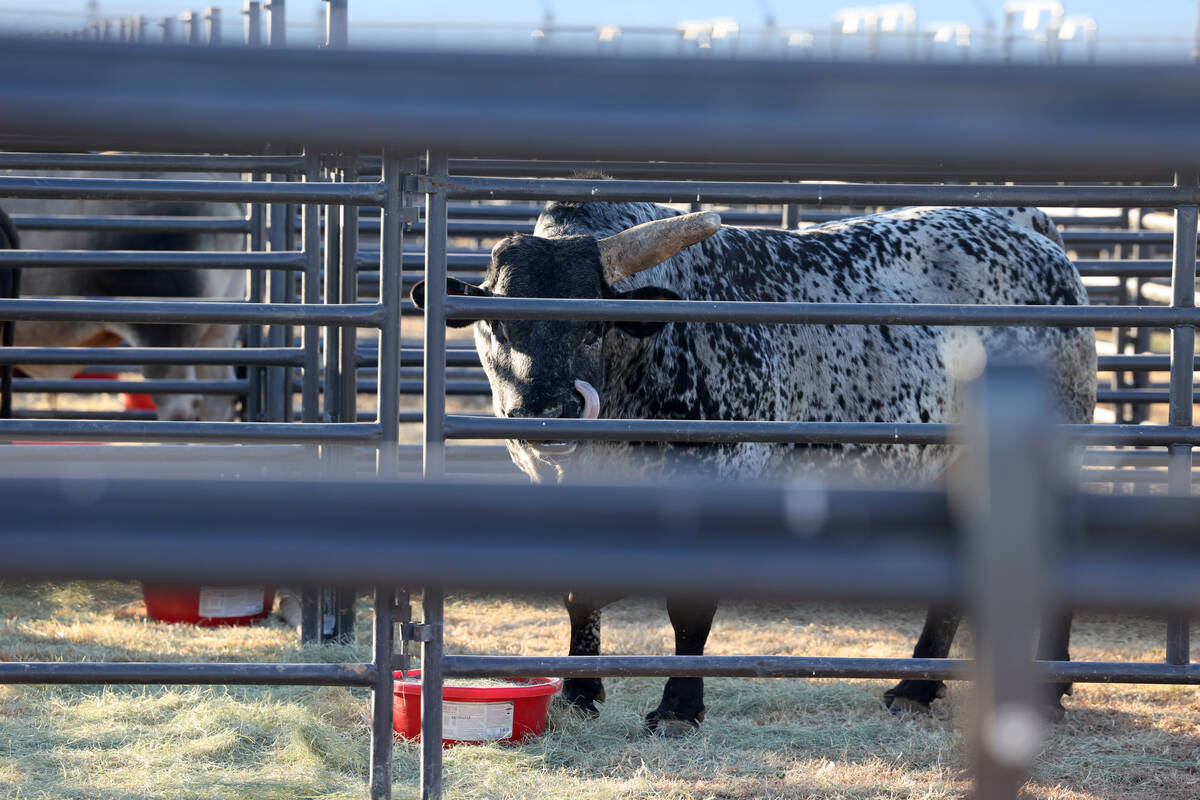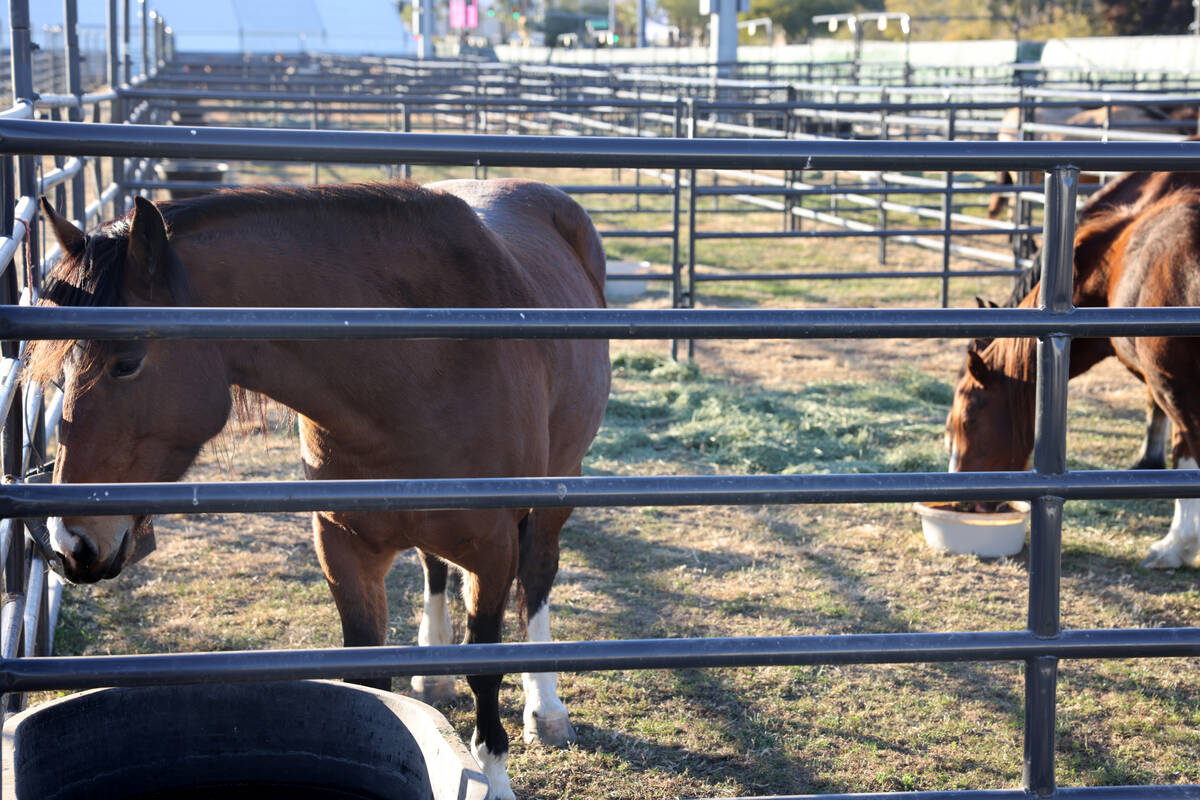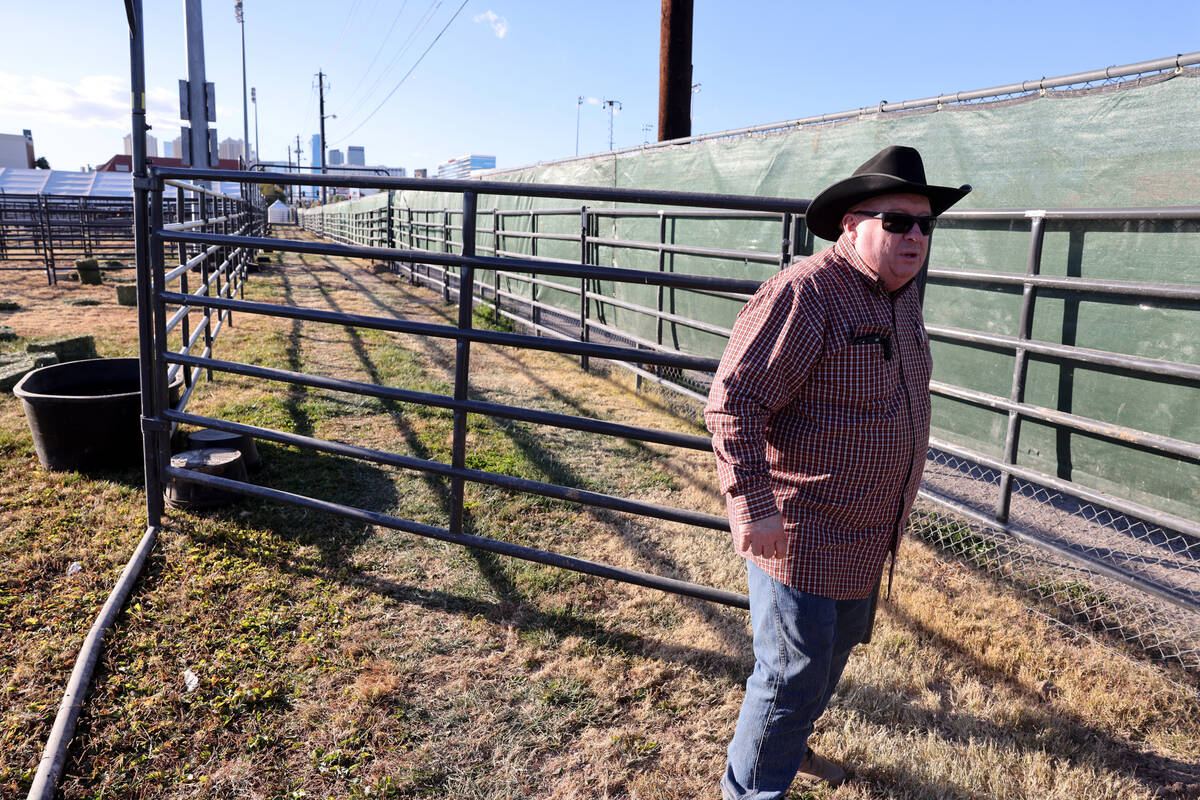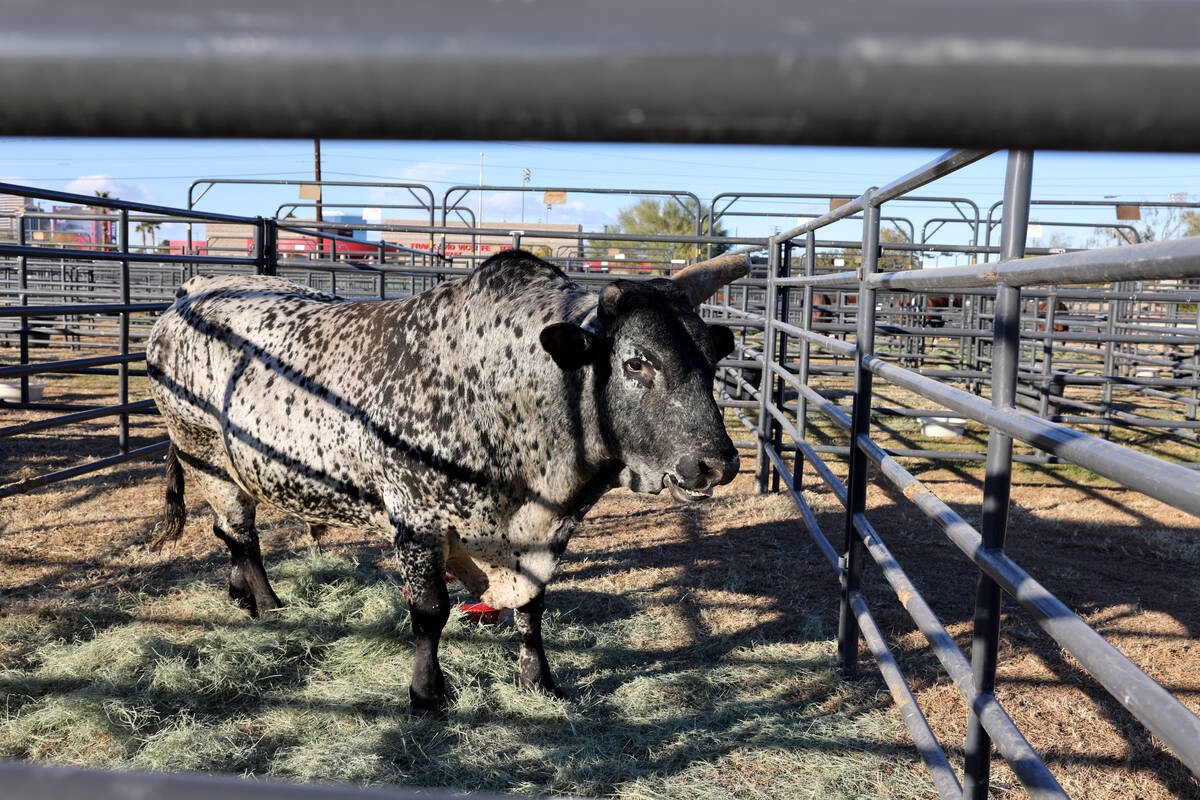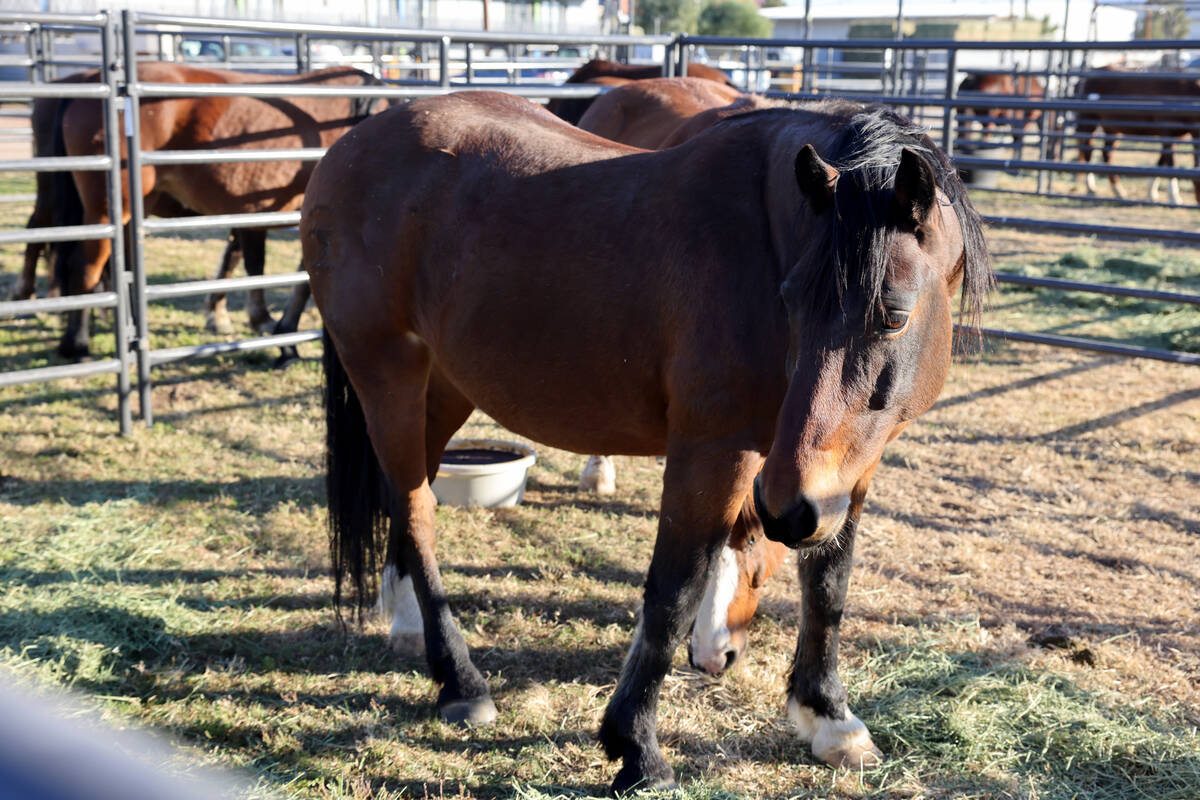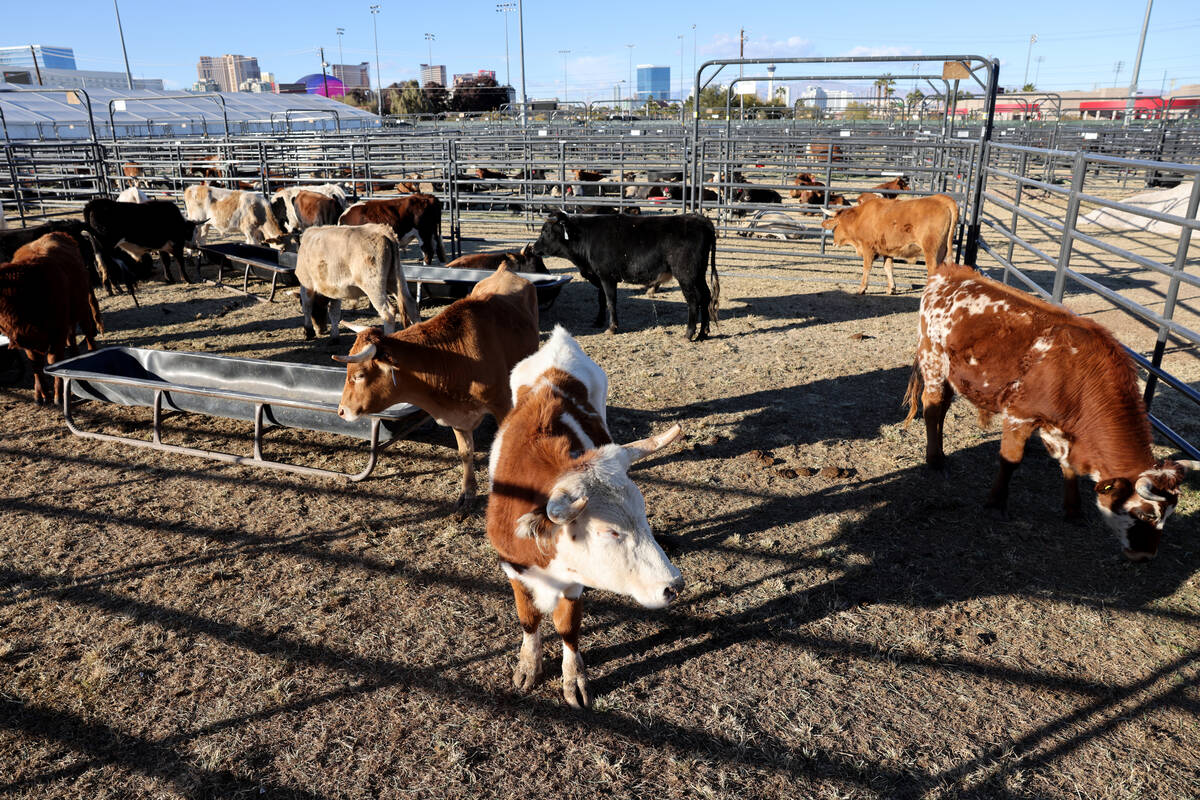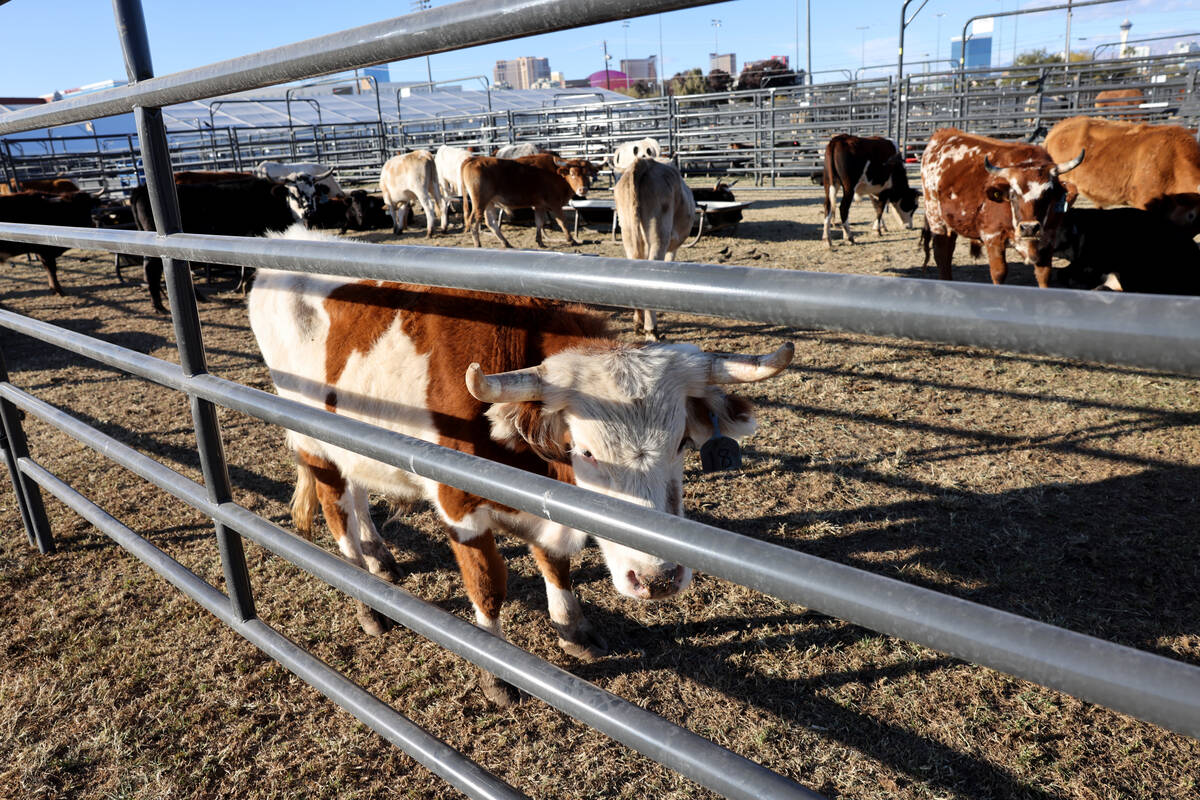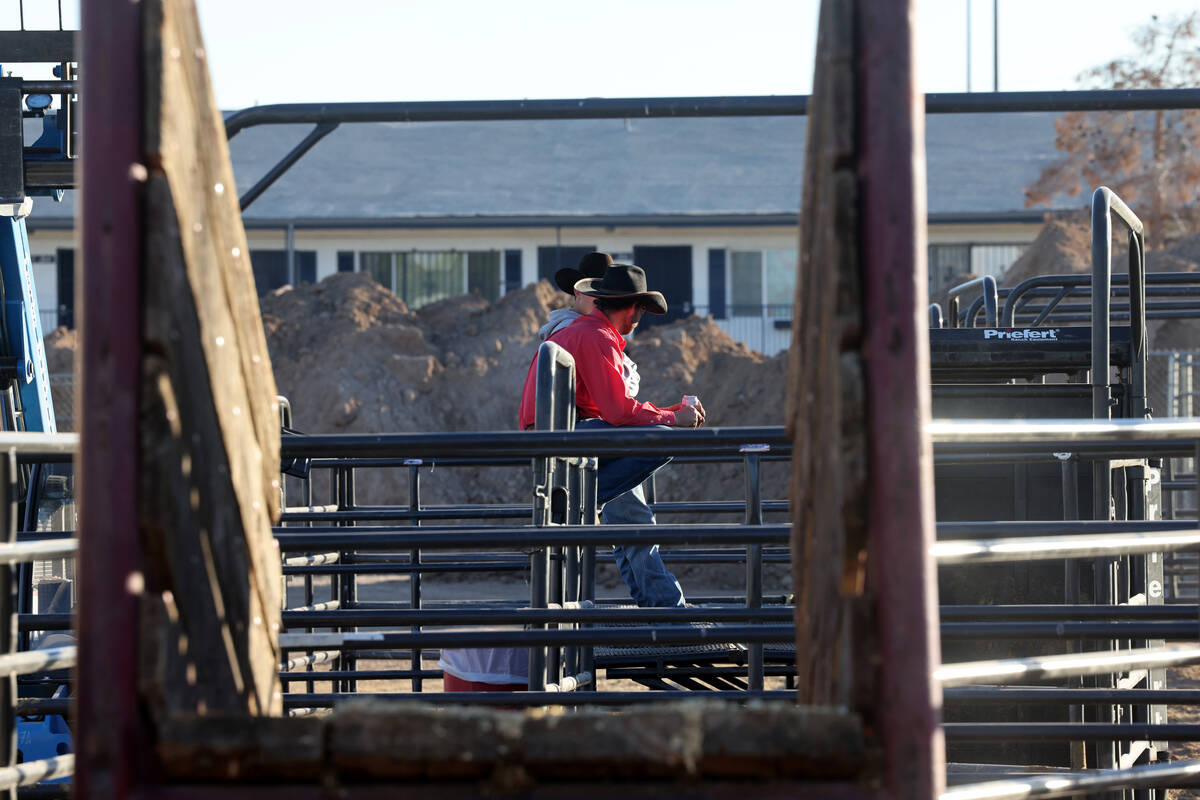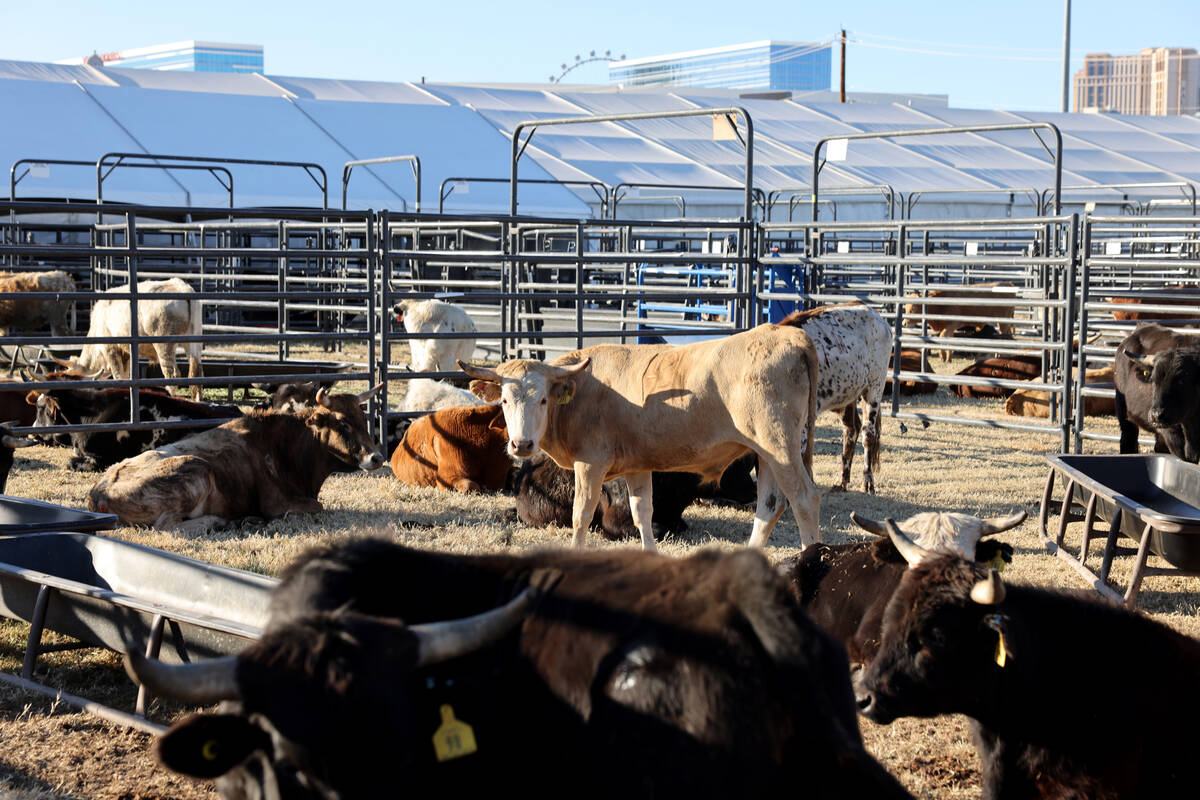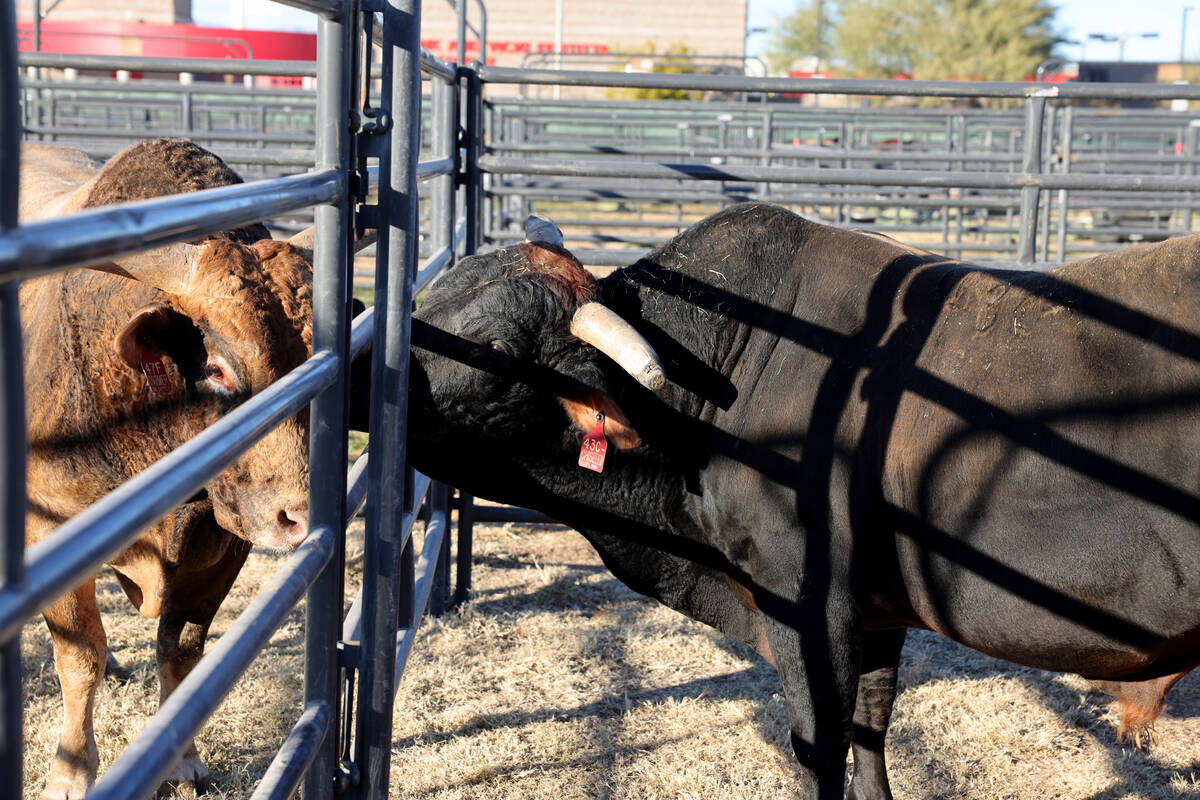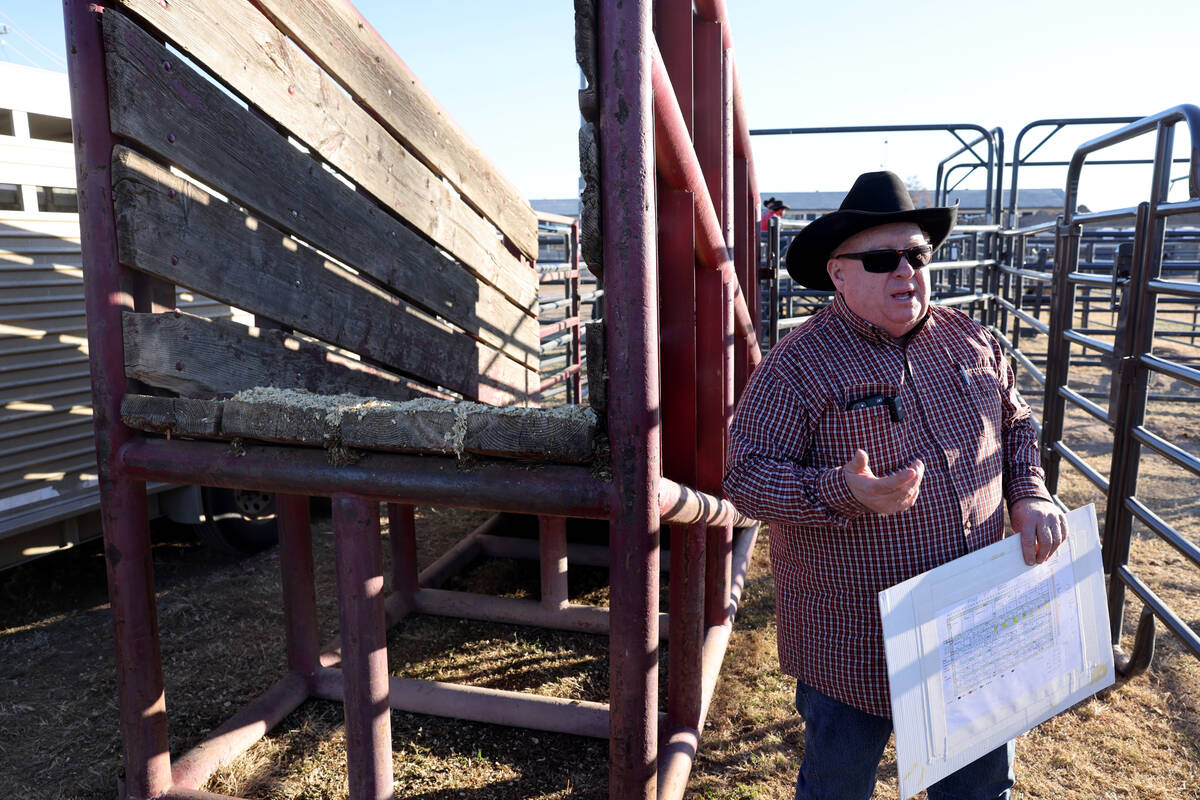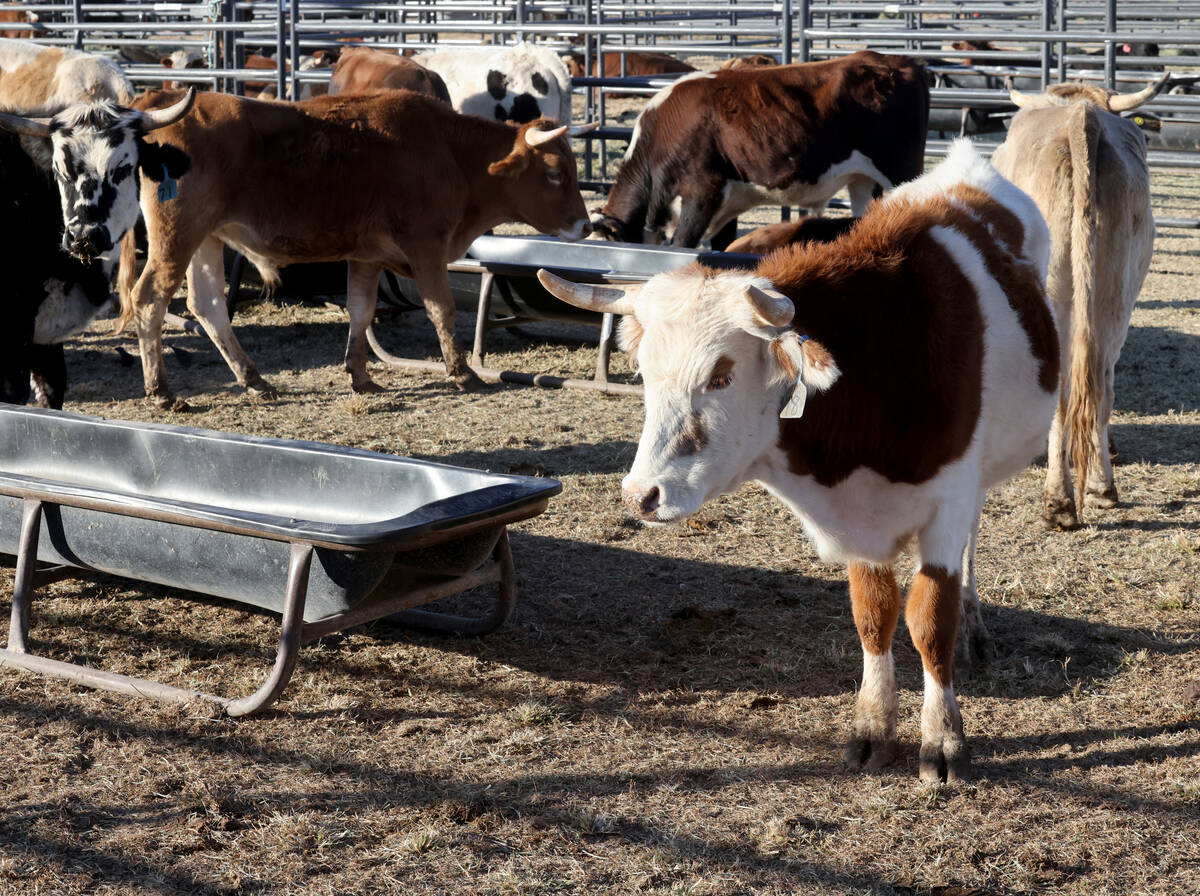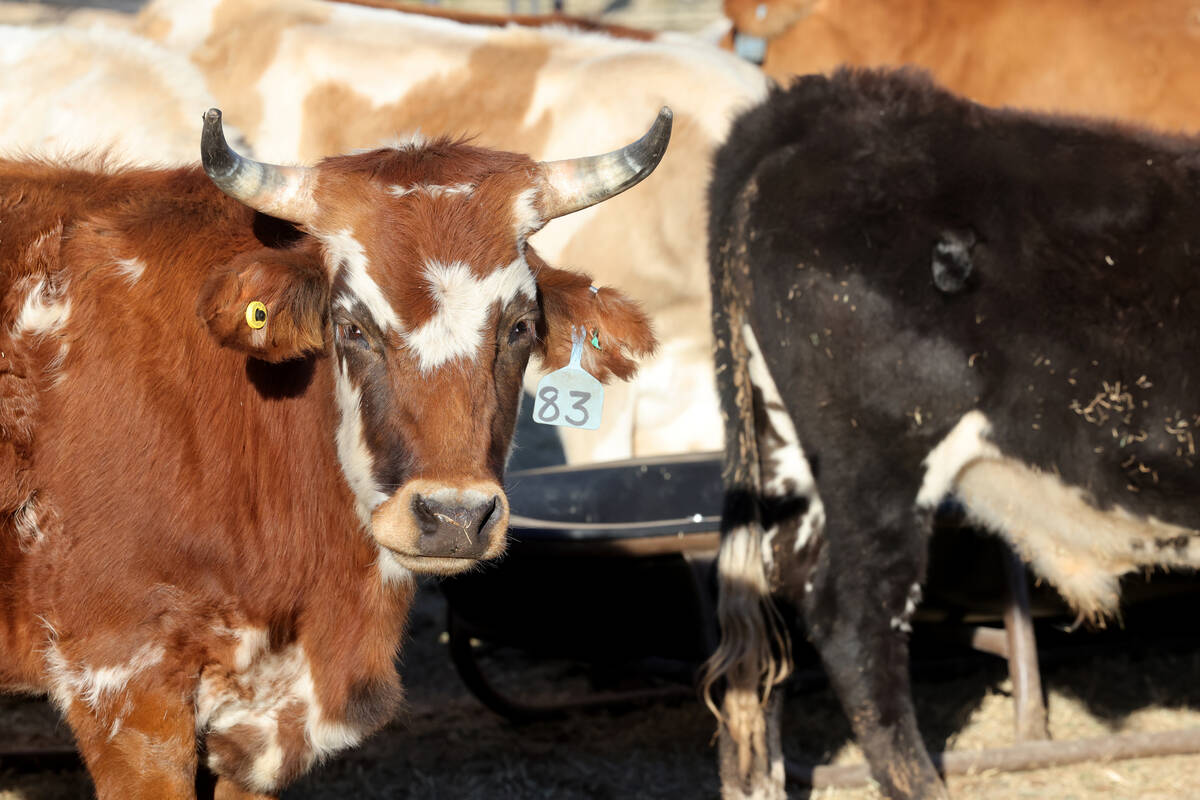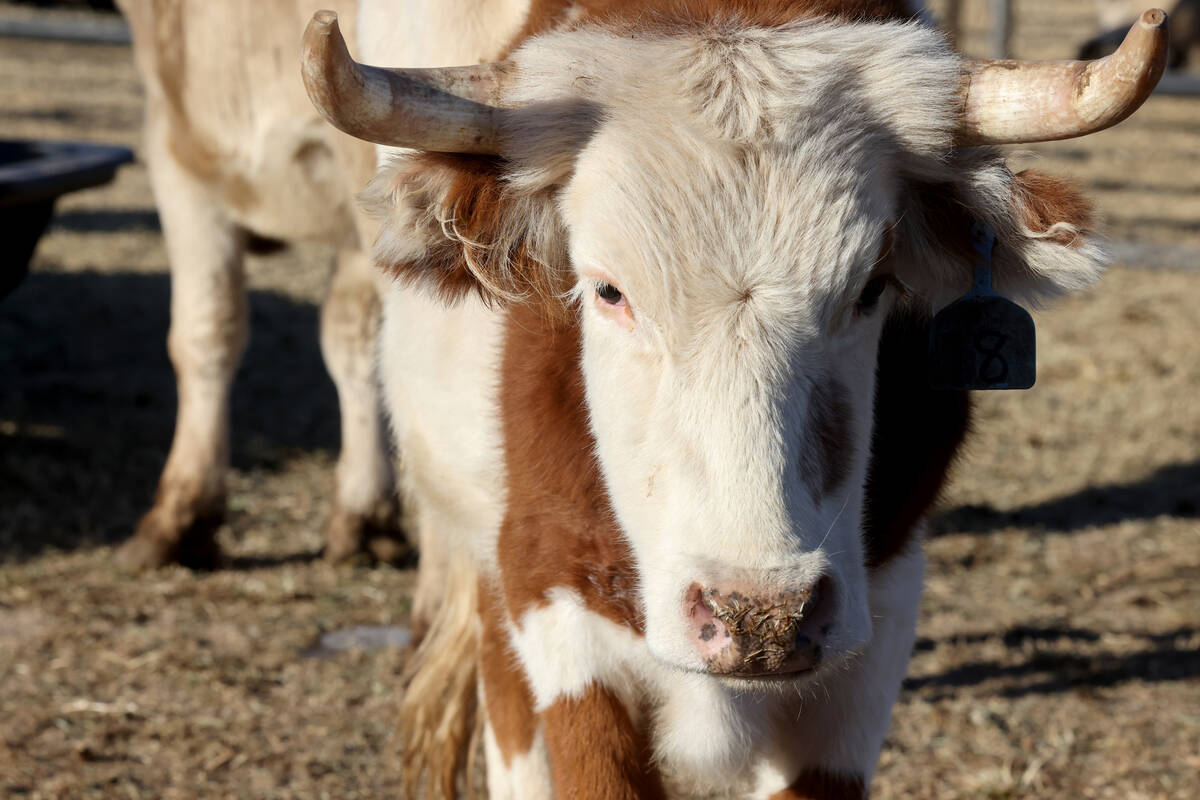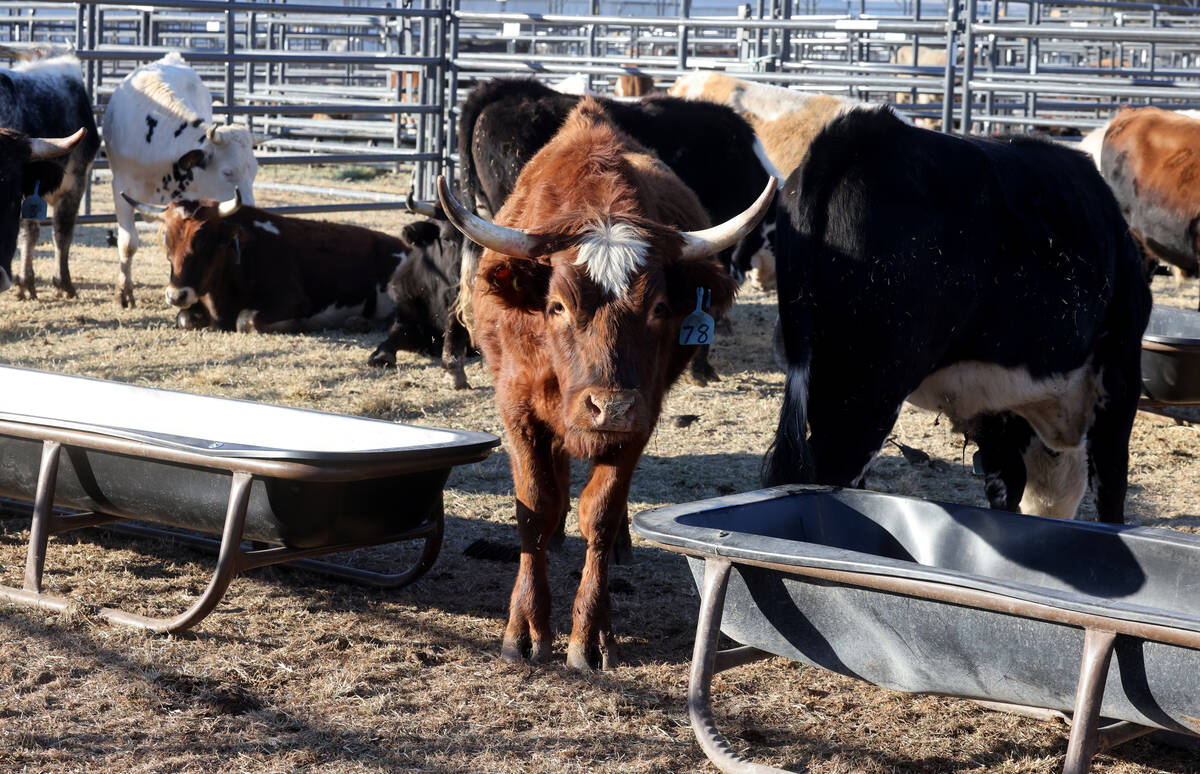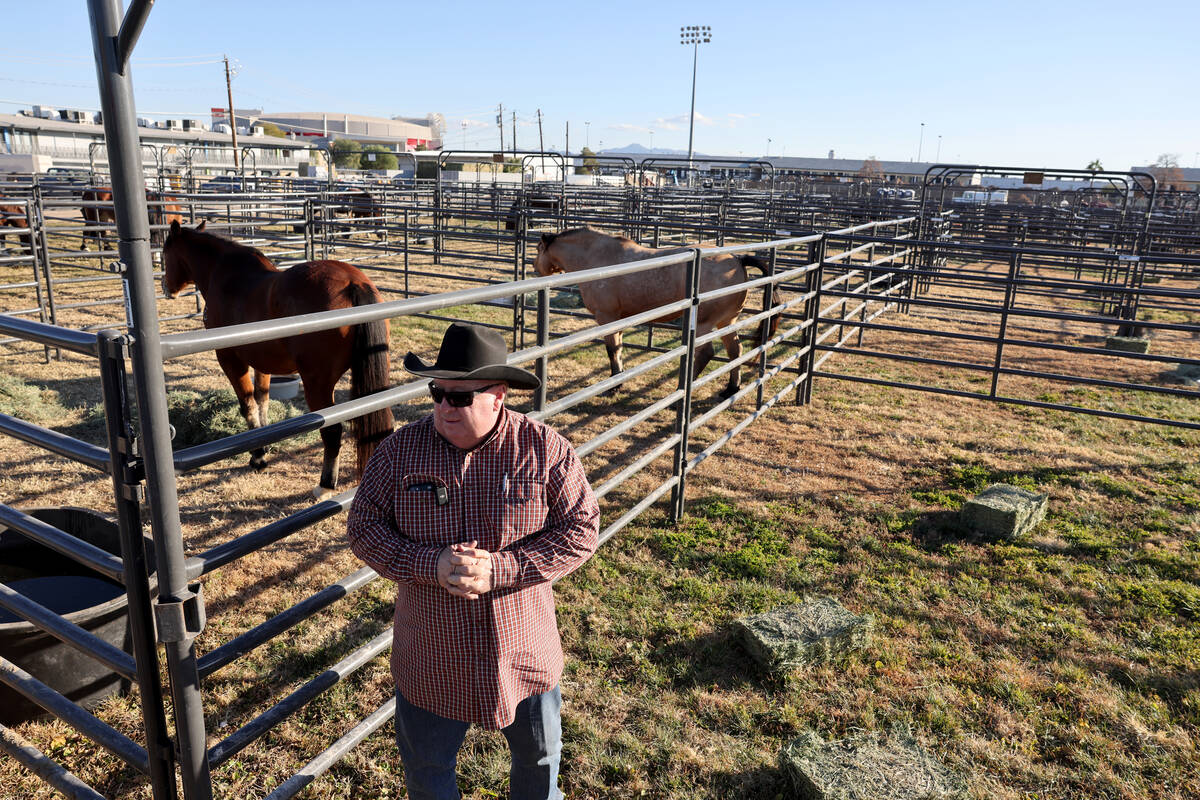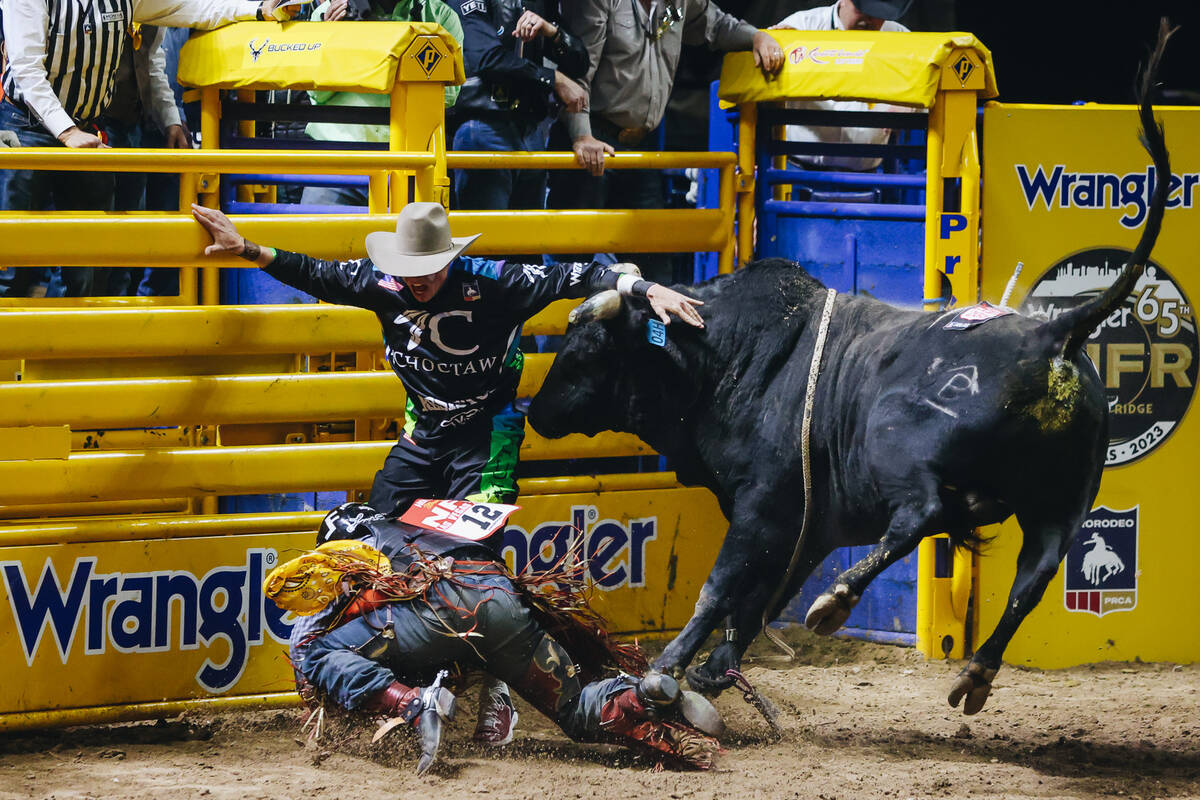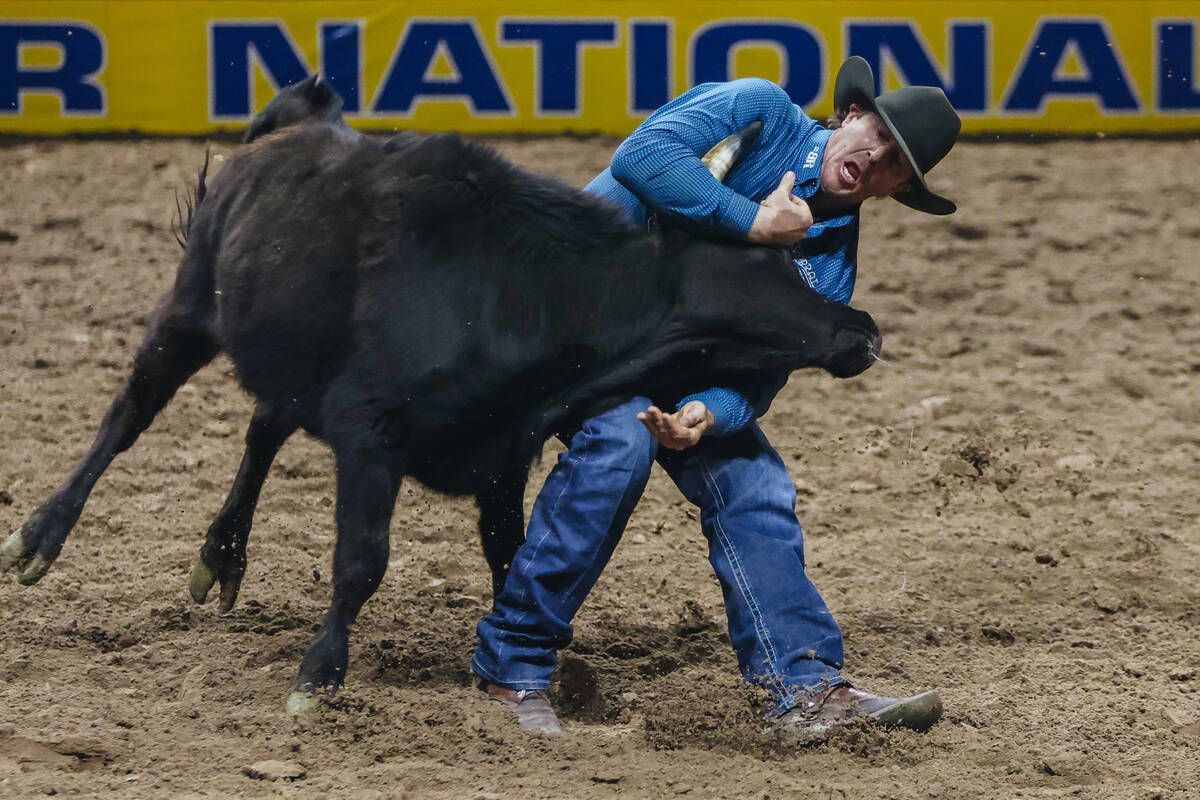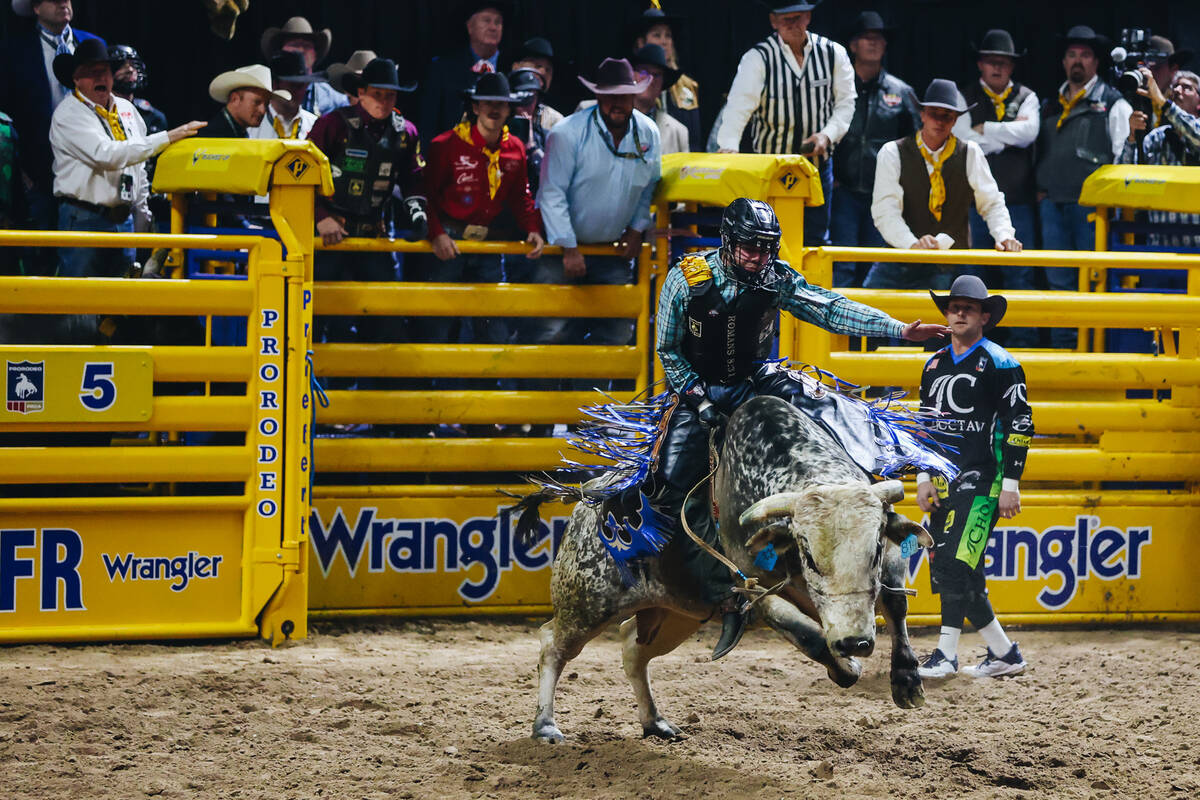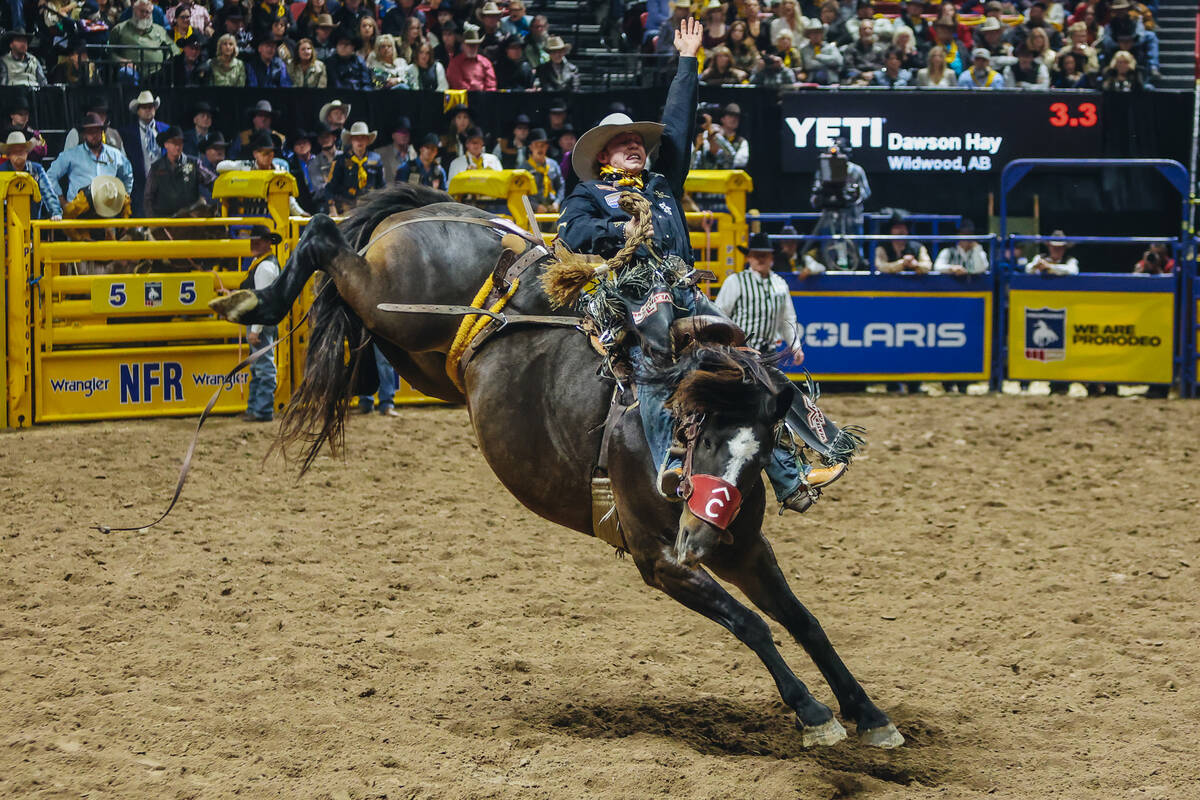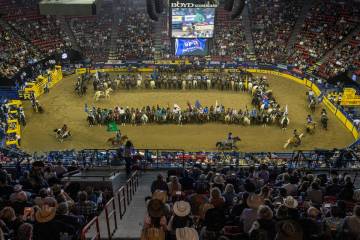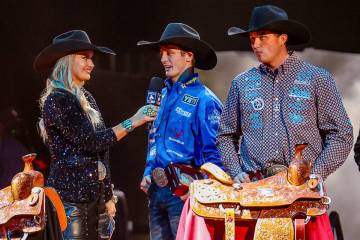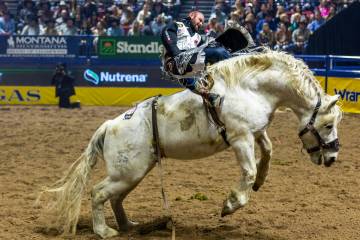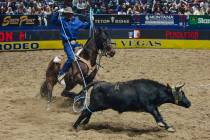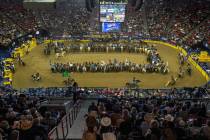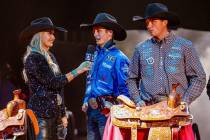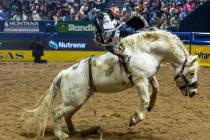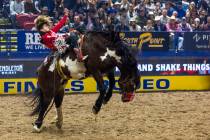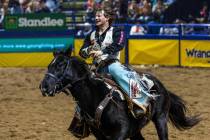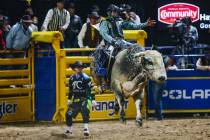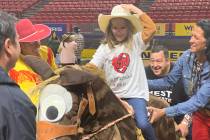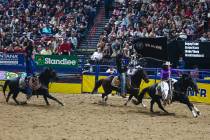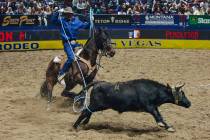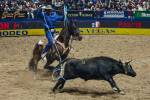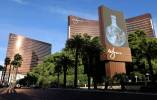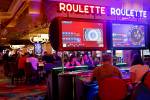From ranch to arena: How NFR livestock spend their time in Vegas
The rodeo athletes make it to Las Vegas a few days before the competition, stretching after their long journeys across the U.S. and Canada. They come to town early to get settled before their National Finals Rodeo performances and their support team makes sure they’re comfortable before their big event: bucking a cowboy or running away from one.
More than 500 livestock participate in the NFR. And like the athletes with numbers pinned on their chests, they’ve spent years in rodeos to become the best stock.
These athletes have their own version of a Vegas resort. The horses, bulls and steer that make up most of the seven NFR events spend most of December living in large pens at UNLV’s intramural field – a soccer pitch-turned-stockyard about a mile from Las Vegas Boulevard.
Nearly 65 stock contractors provide the rodeo animals in a multi-stage process and system that involves handing over the reins, literally, to a special NFR team dedicated to the animals’ management and welfare.
“Everyone thinks of Vegas as asphalt and casinos,” NFR livestock superintendent John Barnes said. “To us, it’s ranches for the next few weeks, at least.”
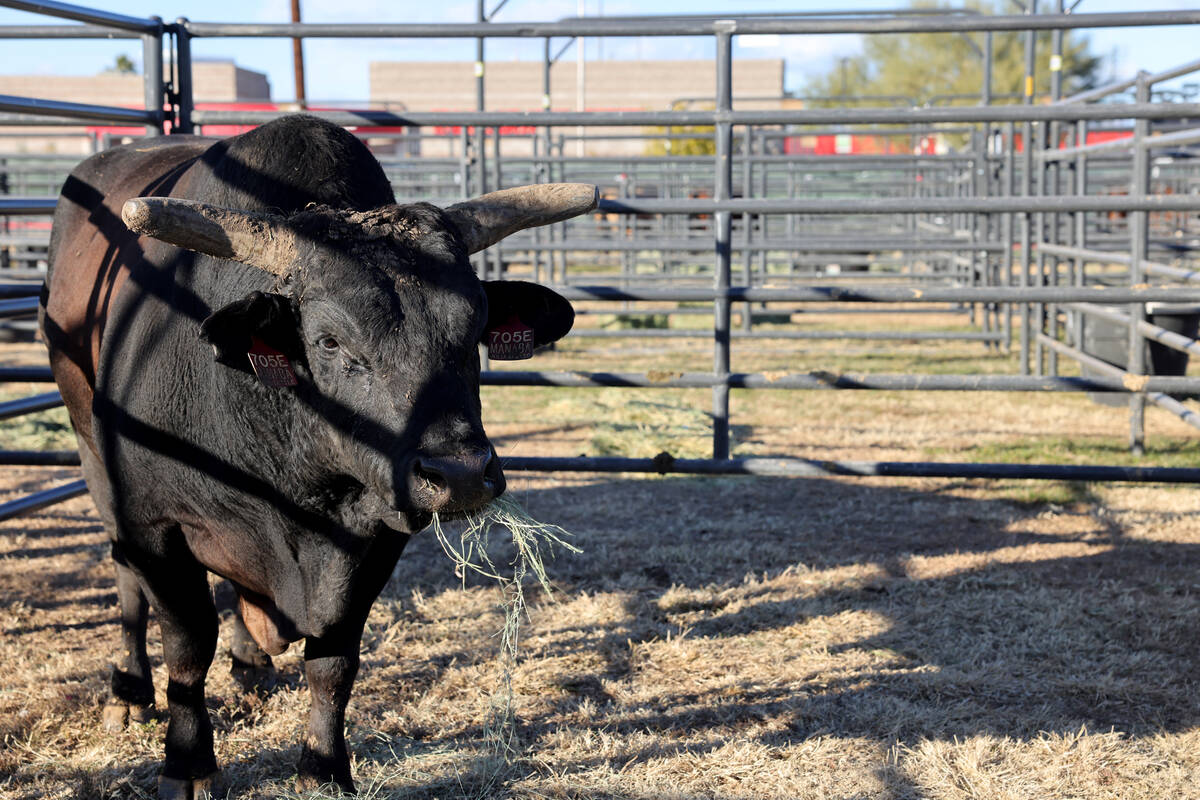
Picking prime cattle
The selection process begins in early fall. Qualifying cowboys and stock contractors will make suggestions of which animals, ridden in rodeos throughout the season, they would like to ride at Thomas and Mack. Each livestock must have participated in at least eight rodeos, verified by PRCA officials, then further auditioned through video submissions of their bucking patterns. Hundreds of choices have to be whittled down.
Marty Barnes, owner of Barnes PRCA Rodeo in Peterson, Iowa, said the decision-making process takes about several months to complete and often starts with stock contractors picking their best-performing animals, while cowboys may look out for which they wouldn’t want to ride.
“The initial cut will be like, ‘Absolutely no. I saw him at such-and-such rodeo and he was’ – in their vocabulary – ‘a piece of crap,’’’ Marty Barnes, who brought seven bulls and horses to NFR this year, said. “It might only be one trip out of 12, but that one trip stuck in their mind.”
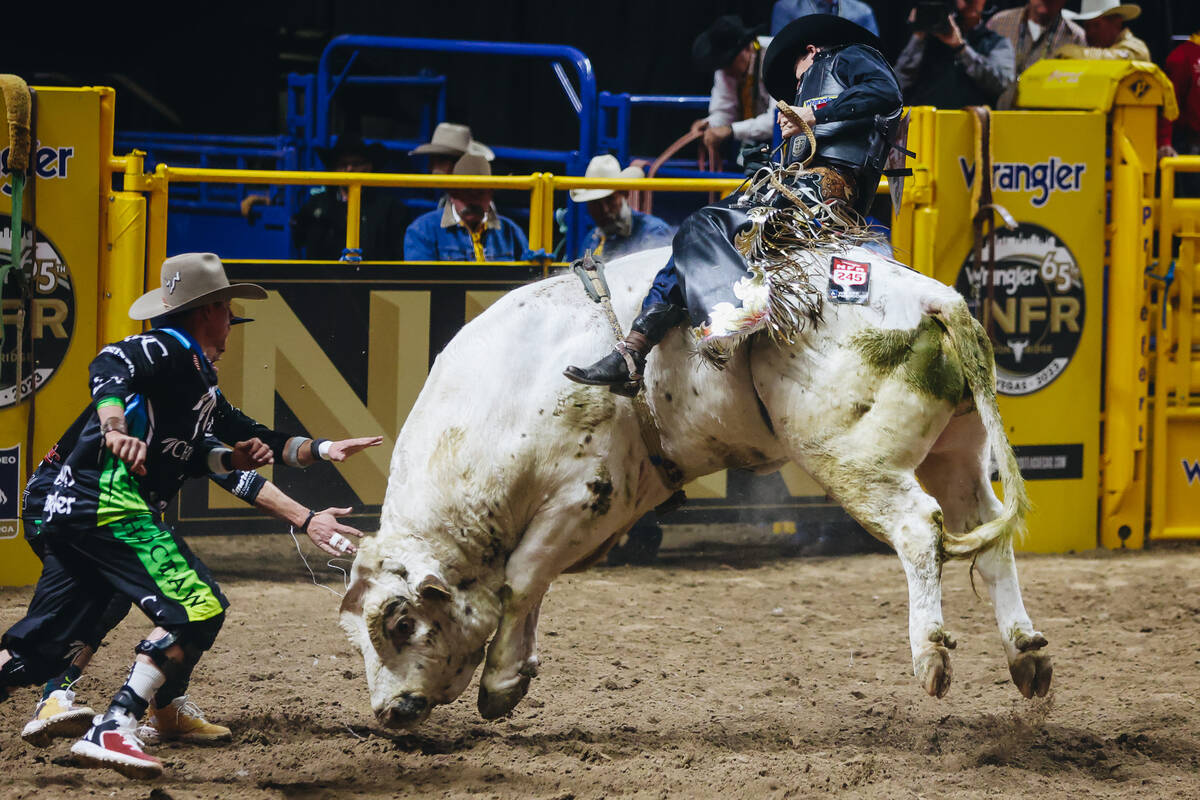
The final list of NFR stock participants is set by early November. Some stock contractors have as few as one participating animal; others can have several dozen. The contractors prepare their animals by submitting feed preferences and getting any vaccinations they need.
The bulls and broncs in rodeo life are bred for the purpose. Some are from several generations of rodeo lineage and may spend about 10 to 12 years in the sport. Some livestock will be raised for the rodeo but still not be qualified enough to ever participate.
“Those animals are raised to buck, like horses are raised to run or cutting horses,” Marty Barnes said. “We can’t make them buck, just like you can’t make a horse faster than he can. All we do is manage them. I compare it to a pitching coach in baseball.”
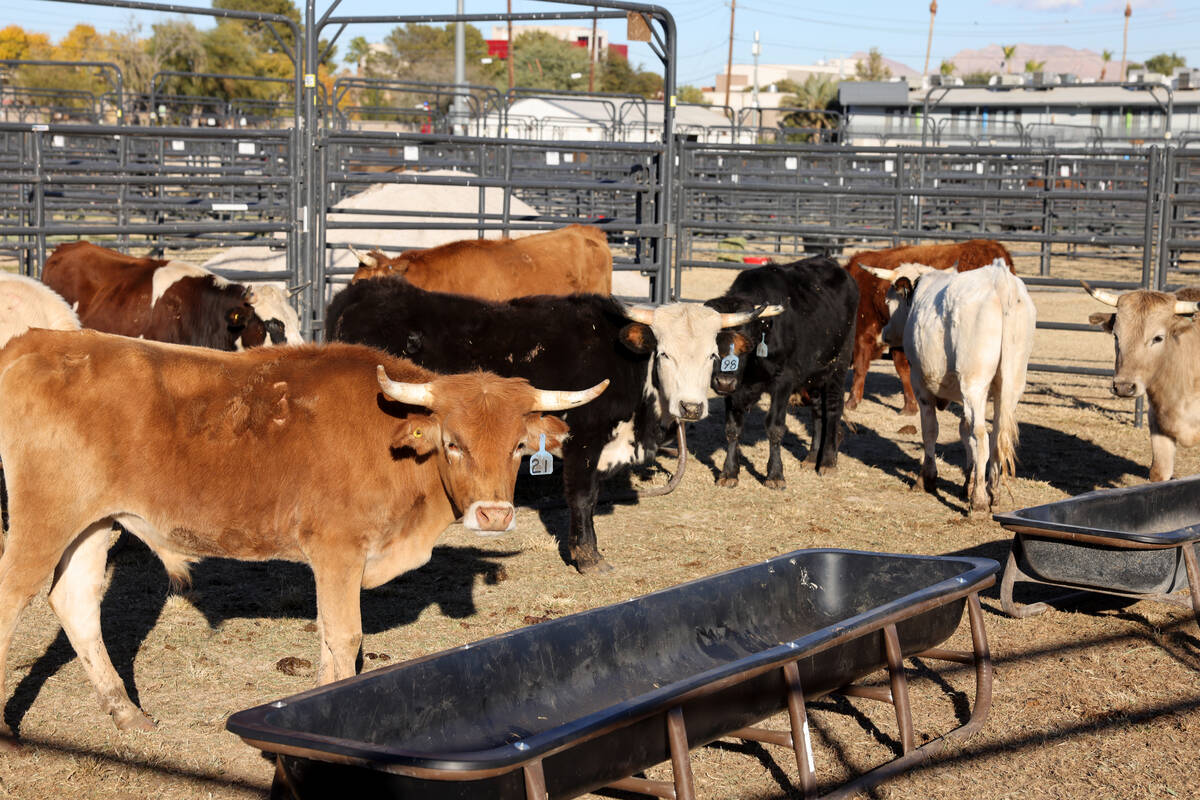
Inside Vegas’ stockyard
Barnes PRCA and other contractors make their way to Las Vegas, bulls and horses in cattle trailers that travel hundreds or thousands of miles to the competition. The arrivals come staggered over several days but all are unloaded and shepherded to their temporary Vegas home about a week before the first performance.
Then a new cowboy takes the reins. Stock contractors can step away from their herd while John Barnes and 11 staff members manage the animals 24/7. They feed and exercise the animals and let them play in piles of sand or dirt – horses will roll in it, while bulls will rub up against it.
A veterinarian and staff check on the animals three times a day and are on-call for any emergencies. Common ailments are scrapes or digestive issues, John Barnes said.
“They get better health care than I do,” he said.
A key element to managing these livestock is the feeding program. NFR feeds the animals based on the dietary needs provided by the stock contractor.
John Growney, a veteran stock contractor now working with Corvallis, Oregon-based Legacy Pro Rodeo, said the food formula is an important element of keeping good rodeo cattle and broncs. Each rodeo group has a different, formulaic approach to the four grass mixes and eight grains, plus lick tubs, available to the animals.
“Without good nutrition, it’s hard to keep your bucking horses bucking all year long because they get tired on the road,” Growney said. “They’re going from one rodeo to another rodeo. They’re drinking different kinds of water and different kinds of feed.”
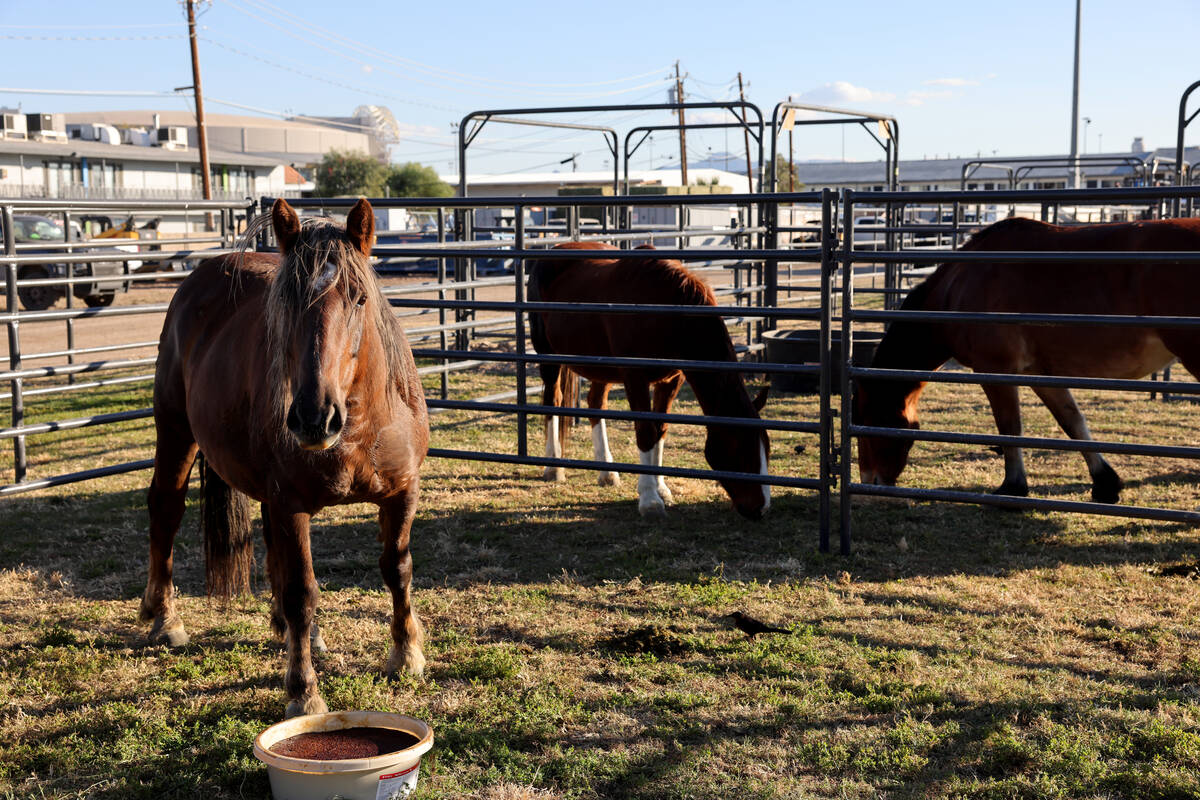
When it’s time for a particular bull or bronc’s performance, he’s led out from the pens and down a service road covered in some of the 2,000 tons used to cover Thomas and Mack and the other exercise areas. The animals are shepherded past fences with apartments on the other side of them and into the arena’s parking lot, then tunnels of the rodeo venue.
All told, dozens of people and hundreds of livestock are involved in the process of selecting and maintaining rodeo animals – most of whom will only go in the arena once, maybe twice. They’re in Las Vegas for most of December, but making a smooth NFR takes months of strategic planning.
“I don’t know if people understand the difference between this rodeo and others,” John Barnes said after pouring over the binders full of cattle information, feed instructions and schematics for stockyard layouts in his on-site office trailer. “It’s planned for 365 days a year. And they’re already planning for next year.”
McKenna Ross is a corps member with Report for America, a national service program that places journalists into local newsrooms. Contact her at mross@reviewjournal.com. Follow @mckenna_ross_ on X.



